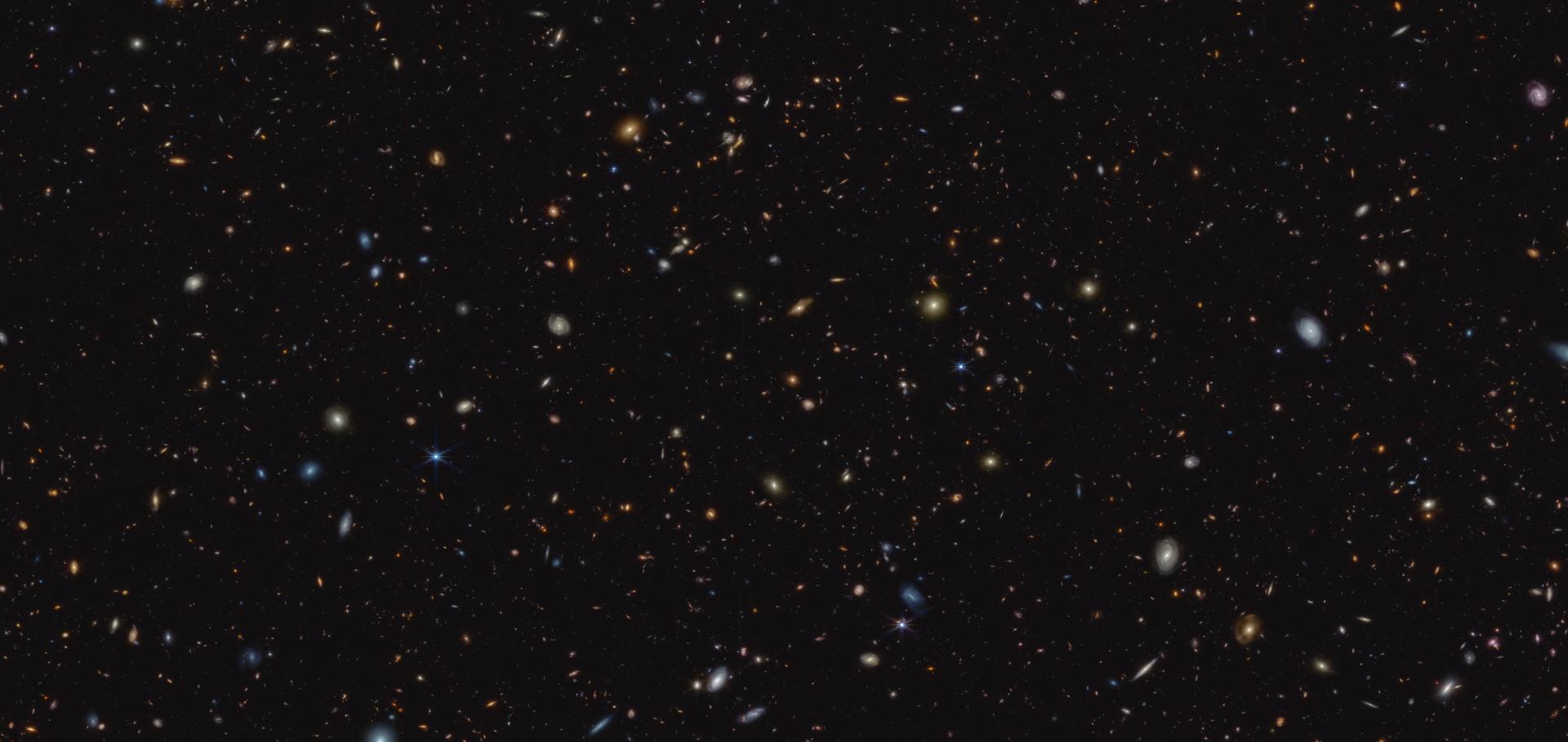The Relation between AGN and Host-galaxy Properties in the JWST Era. I. Seyferts at Cosmic Noon are Obscured and Disturbed
The Astrophysical Journal American Astronomical Society 978:1 (2024) 74
Abstract:
The morphology of a galaxy reflects the mix of physical processes occurring within and around it, offering indirect clues to its formation and evolution. We apply both visual classification and computer vision to test the suspected connection between galaxy mergers and active galactic nucleus (AGN) activity, as evidenced by a close/merging galaxy pair, or tidal features surrounding an apparently singular system. We use JADES JWST/NIRCam imagery of a complete, multiwavelength AGN sample recently expanded with JWST/Mid-Infrared Instrument (MIRI) photometry. This 0.9–25 μm data set enables constraints on the host-galaxy morphologies of a broad range of AGN beyond z ∼ 1, including heavily obscured examples missing from previous studies. Our primary AGN sample consists of 243 lightly to highly obscured X-ray-selected AGN and 138 presumed Compton-thick, mid-infrared-bright/X-ray-faint AGN revealed by MIRI. Utilizing the shape asymmetry morphology indicator, AS, as the metric for disturbance, we find that 88% of the Seyferts sampled are strongly spatially disturbed (AS > 0.2). The experimental design we employ reveals a ≳3σ obscuration–merger (NH–AS) correlation at 0.6 < z < 2.4, and also recovers a physical distinction between the X-ray- and mid-IR-detected AGN suggestive of their link to a common evolutionary scenario. Placing the observed pattern of disturbances in the context of the other average host-galaxy properties, we conclude that mergers are common among obscured AGN. This finding presents tension with the leading model on AGN fueling that requires Seyfert AGN with subquasar luminosities (Lbol < 1045 erg s−1) to evolve only through nonmerger mechanisms.Searching for Emission Lines at z > 11: The Role of Damped Lyα and Hints About the Escape of Ionizing Photons
The Astrophysical Journal American Astronomical Society 976:2 (2024) 160
JADES: Primaeval Lyman-α emitting galaxies reveal early sites of reionisation out to redshift z ∼ 9
Monthly Notices of the Royal Astronomical Society Oxford University Press (OUP) (2024) stae2535
JADES + JEMS: A Detailed Look at the Buildup of Central Stellar Cores and Suppression of Star Formation in Galaxies at Redshifts 3 < z < 4.5
The Astrophysical Journal American Astronomical Society 974:1 (2024) 135
Abstract:
We present a spatially resolved study of stellar populations in six galaxies with stellar masses M * ∼ 1010 M ☉ at z ∼ 3.7 using 14-filter James Webb Space Telescope (JWST)/NIRCam imaging from the JADES and JEMS surveys. The six galaxies are visually selected to have clumpy substructures with distinct colors over rest frame 3600−4100 Å, including a red, dominant stellar core that is close to their stellar-light centroids. With 23-filter photometry from the Hubble Space Telescope to JWST, we measure the stellar-population properties of individual structural components via spectral energy distribution fitting using Prospector. We find that the central stellar cores are ≳2 times more massive than the Toomre mass, indicating they may not form via single in situ fragmentation. The stellar cores have stellar ages of 0.4−0.7 Gyr that are similar to the timescale of clump inward migration due to dynamical friction, suggesting that they likely instead formed through the coalescence of giant stellar clumps. While they have not yet quenched, the six galaxies are below the star-forming main sequence by 0.2−0.7 dex. Within each galaxy, we find that the specific star formation rate is lower in the central stellar core, and the stellar-mass surface density of the core is already similar to quenched galaxies of the same masses and redshifts. Meanwhile, the stellar ages of the cores are either comparable to or younger than the extended, smooth parts of the galaxies. Our findings are consistent with model predictions of the gas-rich compaction scenario for the buildup of galaxies’ central regions at high redshifts. We are likely witnessing the coeval formation of dense central cores, along with the onset of galaxy-wide quenching at z > 3.JADES: Carbon enrichment 350 Myr after the Big Bang
Astronomy & Astrophysics EDP Sciences 689 (2024) a152


